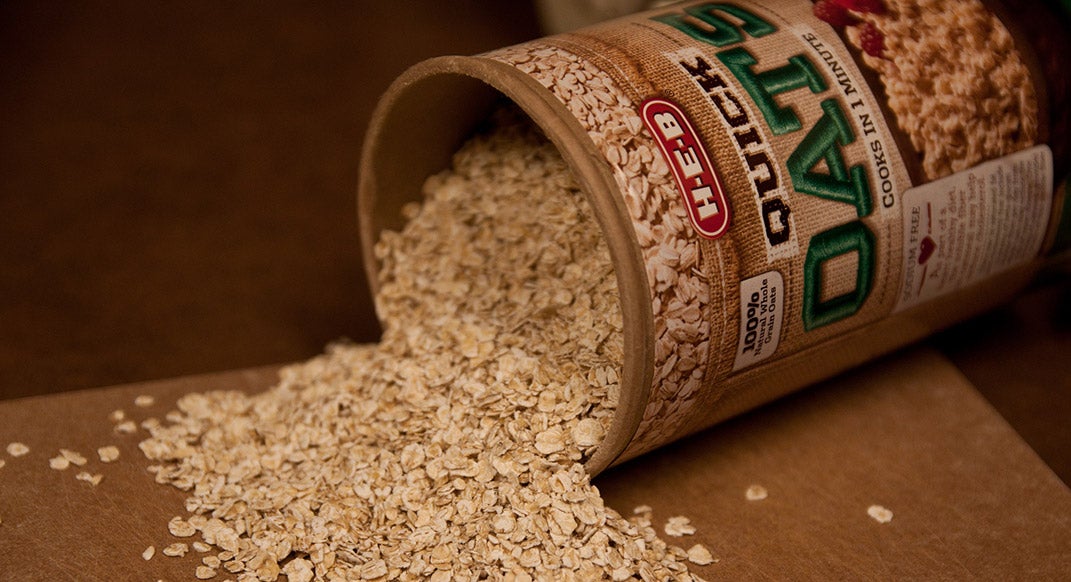Why Oatmeal Is an Ideal Race Fuel

Oatmeal is easy, it’s filling and it makes a quick, healthy breakfast. But with the advent of stylish grains, like amaranth and wheat berries, the humble oat has fallen by the wayside.
As it turns out, plain old oats can be a beneficial fuel for running. Here are three reasons your next run might be the time to show this under-appreciated grain a little extra love.
RELATED: 5 Nutrition Truths For Trail Runners
What are Oats?
Oats are the seed of a grain plant called … you guess it … the Common Oat. The edible part of the oat—called the groat—is hidden within a non-edible hull. Like bulgur and wheat, oats are considered a whole grain.
The list of nutrients packed in oats is long. Aside from familiar nutrients, like complex carbohydrates and dietary fiber, oats are one of a small group of grains that also have protein. A half-cup of uncooked oatmeal has almost as much protein as the same volume of quinoa, around 7g compared to 10g in quinoa. (However, oatmeal is not a complete protein like quinoa is. To make a complete protein, combine your oats with dairy or legumes, like milk, cream or peanut butter.)
Oats also contain minerals like manganese, beta-glucan and avenanthramides, a group of antioxidants that help fight free radicals and boost your immune system.
However, different types of oats contain more or less of the groat. Steel cut, rolled or instant oatmeal and even oat flour are all variations on the groat and have similar nutrition profiles, but their fiber contents and cooking times vary. Steel cut oats have more of the groat, and thus more fiber, where instant oats and rolled oats have less.
A Nutritional Punch
RELATED: Ask The RDN: Should I Fuel with a Protein Shake Post-Run?
Beta-Glucan
Beta-glucan is a type of sugar found in an oat’s cell walls. But it serves a purpose far beyond that of simple carbohydrate fueling. Beta-glucan has been shown to reduce the risk of upper respiratory tract infections (URTIs) in marathon runners and endurance athletes, who are often at higher risk due to heavy training loads within their aerobic thresholds. (This might be why some runners cough a lot after hard workouts or races).
In a 2009 study published in the Journal of Sport Science and Medicine, subjects—runners competing in the Carlsbad Marathon in Carlsbad, California—who were administered beta-glucan rather than a placebo reported decreased URTI symptoms, as well as a reduction in fatigue and improvements in overall health.
Manganese
While only present in the body in very small amounts, manganese serves several important functions. It helps promote proper blood clotting and calcium absorption, as well as regulating blood sugar levels. Further, a study in the journal Medicina found that endurance athletes tended to consume less manganese than the recommended daily intake (RDI) by as much as 44 percent.
For runners, low manganese can mean slower recovery and more fatigue. It can also lead to a higher chance of hitting “the wall,” due to less stable blood sugar levels. Fortunately, oats contain one of the highest manganese concentrations of all foods: half a cup of quick-cooking oats contains almost exactly the 2mg of manganese recommended per day, more than quinoa, buckwheat, barley and bulgur.
RELATED: What Every Trail Runner Should Know About Iron Deficiency
Flavonoids
Flavonoids are natural antioxidants that can help fight free radicals—potentially harmful molecules, which can put you at higher risk of diseases like cancer and Alzheimers. They also play a key role in reducing muscle inflammation, which helps promote post-run recovery. A certain group of flavonoids, called avenanthramides, aren’t found in any grain except oats. They’re particularly helpful in regulating cholesterol levels and promoting heart health.
Flavonoids may be trace ingredients, but they’re vital. They can be a challenge for the body to absorb though, because they aren’t always bioavailable. Many flavonoids are fat-soluble, which means eating them in combination with some fat—like adding milk to your oatmeal—makes it easier for your body to absorb.
Fast Fueling
An important thing to remember about fueling on oats is the level of fiber they contain (read: potential for lots of trips to the bathroom). To get all the good nutrients without the unpleasant side effects, make sure you eat the right kinds of oats at the right time.
Explore your options
Different types of oats contain different amounts of fiber. The more fiber, the higher the likelihood that you’ll run into mid-run trouble. Steel cut and old-fashioned oats are the hardest to digest, so opt for quick-cooking or instant options, which you can blend into a smoothie or bake into bars to make them easier on your system.
Time it right
Experiment with your nutrition on easy run days. Try different kind of oats in different amounts and different preparations to gauge how your body responds to variations in fuel. Since each runner is unique, it’s good to know what works for you in practice so you can race stress-free.